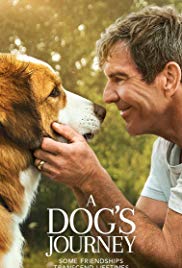
WE'LL TAKE MANHATTAN
UK, 2012, 90 minutes, Colour.
Karen Gillan, Aneurin Barnard, Helen Mc Crory, Frances Barber, Anna Chancellor, Alan Corduner, Alex Jennings.
Directed by John Mackay.
We’ll Take Manhattan is a television film focusing on the early career of celebrated photographer, David Bailey, and model of the 1960s, Jean Shrimpton. It opens with their travelling by plane to New York City in 1962, Bailey clashing with his boss, Lady Claire Rendlesham. And this clash continues throughout the film.
We are shown the early career of Bailey, an assistant photographer, going out on his own, catching the eye of the editor of Vogue, going to work with Vogue, meeting Jean Shrimpton and fascinated by her, going to New York to do the celebrated photo-shoot in that city. We are also introduced to Jean Shrimpton, rather impassive, taken by her quiet parents to dance classes, with deportment. By accident, she is seen by David Bailey and invited to do a commercial, invited back, does many photo-shifts, goes to New York with him, falls in love, experiences the tension between him and his editors.
The film opens by saying that there was no youth culture in the early 1960s, no one became famous unless they were rich and the Beatles had not been heard of. It seems to put the changes in the 60s down to Bailey and Shrimpton. However much truth there is in this, they were certainly influential.
Aneurin Barnard is the cheeky Bailey. Dr Who’s Karen Gillan is Jean Shrimpton. Helen Mc Crory is the upper-class and cantankerous Lady Claire. Anna Chancellor appears as the director of the dance Academy and Frances Barber appears at the end as Diana Vreeland, approving the photo shoot.
1. The title, the popularity of the song? The Brits taking Manhattan? UK in the 1960s, the US? Photography, fashion?
2. The opening, the comment about the Beatles, famous celebrities, youth culture?
3. The transition from the 1950s to the 1960s, trends, the opening up of the new, the breaking of the seemingly staid 1950s?
4. David Bailey and Jean Shrimpton and their reputations, his fame as a photographer, working with Vogue, the photo shoots? Jean Shrimpton as the classic model of the 1960s?
5. The reproduction of the photo shoots, the actual photos – and their being seen during the final credits?
6. David Bailey, cheeky Cockney, young, his photos, working as an assistant, the sexual relationship with the model, his going out on his own, his photo taken up by Vogue? The offer of the job, his wariness, decision to go, the pay? Seeing Jean Shrimpton?
7. Jean, young, awkward, determined, her parents, the audition, the parents and their desires, class, deportment? The accident, being seen by Bailey?
8. The request for her to go for the advertisement, her clothes and style, his enthusiasm?
9. Claire, older, her position of authority, relationship with the editors, going to America, reluctantly? Her assistant and treatment of him? Anti-Bailey?
10. Going to New York, new style in photography? Bailey and Jean and the relationship? Falling in love? Together? The work, the photographs, his
photography?
11. The arguments with Claire, the vicious interchanges? Her sacking Bailey, phoning London, wanting her to stay with the photo shoot? Her putting up with this? Finishing the shoot? Bailey and his destroying the negatives, the discussions with Jean?
12. The success of the shoot, the return to London, the applause? Information in the aftermath about the characters, the success, Clare moving to Queen?